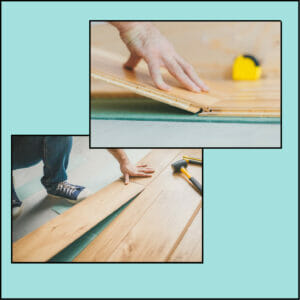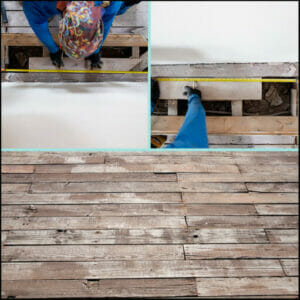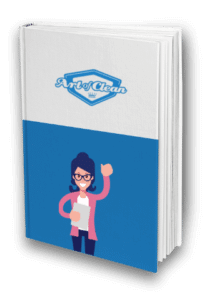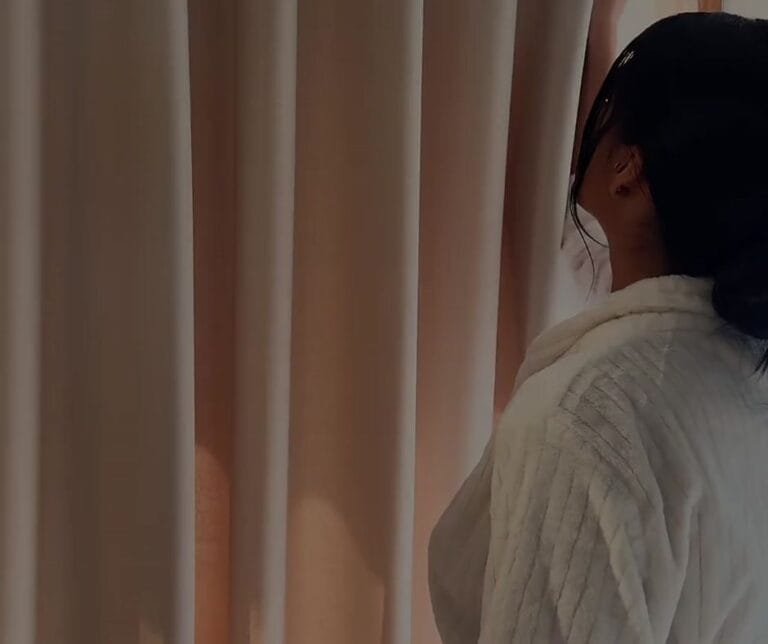You reach for google and type in “How do I stop my floorboards from creaking?” As a mum, I know how much this can frustrate a tired, worn-out parent, so I’ve researched, and hopefully, I can help us all.This article will cover:
- Why are your floorboards are creaking?
- How do you stop your floorboards from creaking?
I have also found a little trick but I will put that at the end, so keep reading.
I won’t waffle on any longer as I know how busy being a parent is. Quick and simple is better!
1. Why are your floorboards creaking?
There are many reasons your boards will creak.
Some of it is just down to wear and tear, but other issues are usually caused when they were originally installed.
Here are the leading causes of that awful creak:
- There could be a small gap between the top of the floor joist and the floorboard on a suspended floor.
- With a floating floor, inadequate or uneven underlay can cause it.
- Incorrect nails.
- Nails have come loose.
- Nails are too far apart.
- The joists of the floorboards have weakened over time.
- Boards have got wet
An example of floating floorboards. The term is the method, very much like how laminate is put down.

An example of a suspended floor. These are ones that were used in many houses around the mid-20th century. It’s a ground floor that has a void underneath.

2. How do you stop your floorboards from creaking?
-
First step –
Before you start fixing, you will need to establish where the noise is coming from, it must be exact, or you won’t stop the dreaded noise.
The best way to find the exact mark is by walking around the boarded area and placing something in the correct location.
(If it helps, ask someone to walk around while you listen, two ears are better than one)
-
Second step –
Once you have found the problem, some investigation to find the cause is next.
Sometimes, you may lift your boards and find something worse than you initially thought, such as rotten boards caused by water or woodworm.
If you see this, the best thing you can do is call in the professionals.
-
Third step –
If you have found the cause, time to see if we can fix it:
- Wrong nails – In some cases, the nails or screws initially used may have been too short or too weak to do the job. If this is the case, and you feel confident, remove the nails and replace them with suitable ones.
- Inadequate nailing – If you have found the nails are too far apart or not in the joists properly, you have a couple of options. You can remove them and replace, or better still, leave them in place and screw the board to the joists where it is loose.
- Warped or twisted joists – If you have lifted the boards and found the beams are the issue, you can fix another piece of timber to the affected beam, making sure it’s the right height to reach the board you’ve lifted
- Underlay issues – the poor quality or poorly fitted underlay can cause many problems, especially for a floating floor. Gaps in the underlay often contribute to your floor creaking. One solution for this is finding the exact spot and directly over the gap, making a hole, and putting some epoxy resin to fill the space. The other way is to lift the boards, fix the underlay issues and relay. (I would say it’s very definitely time to call the professionals now)
- Moisture exposure – leaks or spills over long periods will cause the boards to become damaged. They become twisted and warped, so removing and replacing the affected boards is the only way to go once you have fixed the leak.
So, there you go. I’m sure some of this will help.
If you can’t find any obvious reasons for the noise, I would seek professional advice.
Here is the little trick I promised:
Put some talcum powder between the boards. This isn’t a professional fix, but if they are rubbing, sprinkling powder in between, and compacting it, it should stop the noise. (Probably not one to try unless you have carpet over the top, little messy otherwise, ha-ha)
For further advice or information on our Carpet and Soft Furnishing care, please do not hesitate to contact the Art of Clean team on 01223 901551 in Cambridge. Our services include Carpet Cleaning, Upholstery Cleaning, oriental and area Rug Cleaning, Curtain Cleaning, Patio, and Driveway Pressure washing Leather Cleaning, Stone and Tile Floor Cleaning, and Wood Floor Sanding and Restoration. We also supply new flooring and carpets through our sister company Art of Flooring. Our Dry-Cleaning service is provided by Farthings Cambridge
 Written by Tracey Gilbey, Marketing and Admin Coordinator at Art of Clean.
Written by Tracey Gilbey, Marketing and Admin Coordinator at Art of Clean.
Another article you find helpful:
The most common problems we come across when restoring wood floors







